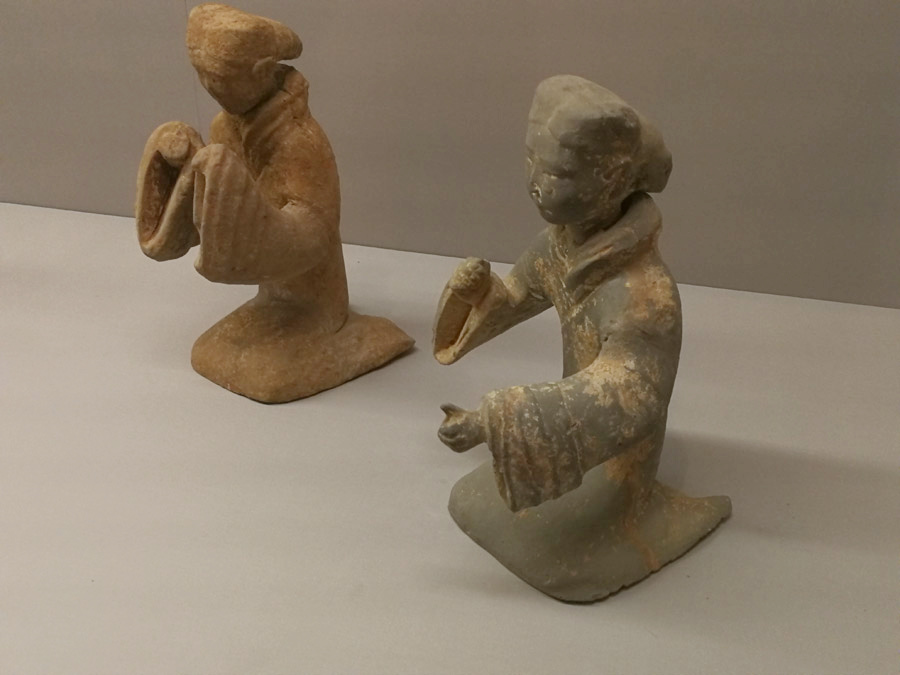 |
|
Female musicians thought to be playing stone chimes and bells that have long since seized to exist. [Photo provided to China Daily] |
But before diving into that era, the exhibition glances at an empire that directly preceded Han, the Empire of Qin (221-206 BC), founded by Emperor Yingzheng, who united China for the first time in the country's history. The Qin Empire, which was supposed to last forever, lasted for a mere 15 years, with its demise coming 10 years after the death of Ying, who had tried to realize his vision with an iron hand. The fall of the Qin was followed by a period of chaos, when different forces vied for power. Eventually, Liu Bang, founder of the Han Dynasty, triumphed.
Thus began a golden era, of whose achievements in nation building as well as arts and sciences provided textbooks for those who came after. One easily overlooked item in the exhibition is a palm-sized remainder of a Han Dynasty map. Against the earth-colored background, the black lines used to illustrate mountains, rivers and roads are still clearly See Exhibit, visible. "This map, drawn on paper made of hemp linen and dating back to a period between 179 BC and 157 BC, directly contradicts the common view that papermaking was invented in China around 105," Shan says.
Judging by the evidence, Han artists and artisans were strong believers of "form follows function", two millennia before the principle was enunciated by some advocates of modernist architecture in the early 20th century. However, unlike the modernists who in their practice often come up with minimalist, industrial designs, the Han seemed to believe that more is indeed more. Whatever they made, whether a lamp or a sword, or anything else, they spared no detail on it. Yet that detail, apart from being decorative, was also highly functional.